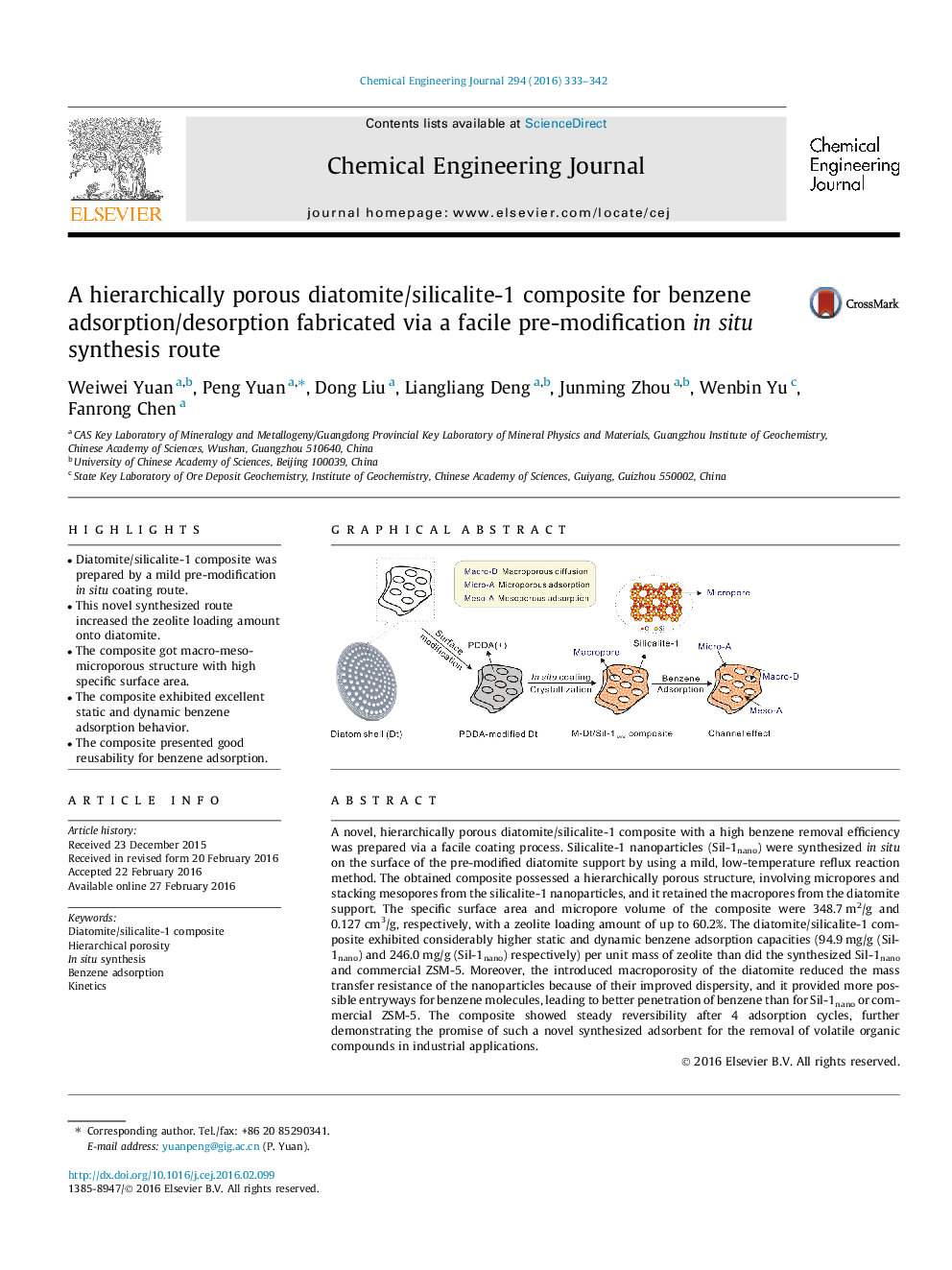| کد مقاله | کد نشریه | سال انتشار | مقاله انگلیسی | نسخه تمام متن |
|---|---|---|---|---|
| 145743 | 456349 | 2016 | 10 صفحه PDF | دانلود رایگان |
• Diatomite/silicalite-1 composite was prepared by a mild pre-modification in situ coating route.
• This novel synthesized route increased the zeolite loading amount onto diatomite.
• The composite got macro-meso-microporous structure with high specific surface area.
• The composite exhibited excellent static and dynamic benzene adsorption behavior.
• The composite presented good reusability for benzene adsorption.
A novel, hierarchically porous diatomite/silicalite-1 composite with a high benzene removal efficiency was prepared via a facile coating process. Silicalite-1 nanoparticles (Sil-1nano) were synthesized in situ on the surface of the pre-modified diatomite support by using a mild, low-temperature reflux reaction method. The obtained composite possessed a hierarchically porous structure, involving micropores and stacking mesopores from the silicalite-1 nanoparticles, and it retained the macropores from the diatomite support. The specific surface area and micropore volume of the composite were 348.7 m2/g and 0.127 cm3/g, respectively, with a zeolite loading amount of up to 60.2%. The diatomite/silicalite-1 composite exhibited considerably higher static and dynamic benzene adsorption capacities (94.9 mg/g (Sil-1nano) and 246.0 mg/g (Sil-1nano) respectively) per unit mass of zeolite than did the synthesized Sil-1nano and commercial ZSM-5. Moreover, the introduced macroporosity of the diatomite reduced the mass transfer resistance of the nanoparticles because of their improved dispersity, and it provided more possible entryways for benzene molecules, leading to better penetration of benzene than for Sil-1nano or commercial ZSM-5. The composite showed steady reversibility after 4 adsorption cycles, further demonstrating the promise of such a novel synthesized adsorbent for the removal of volatile organic compounds in industrial applications.
Figure optionsDownload as PowerPoint slide
Journal: Chemical Engineering Journal - Volume 294, 15 June 2016, Pages 333–342
